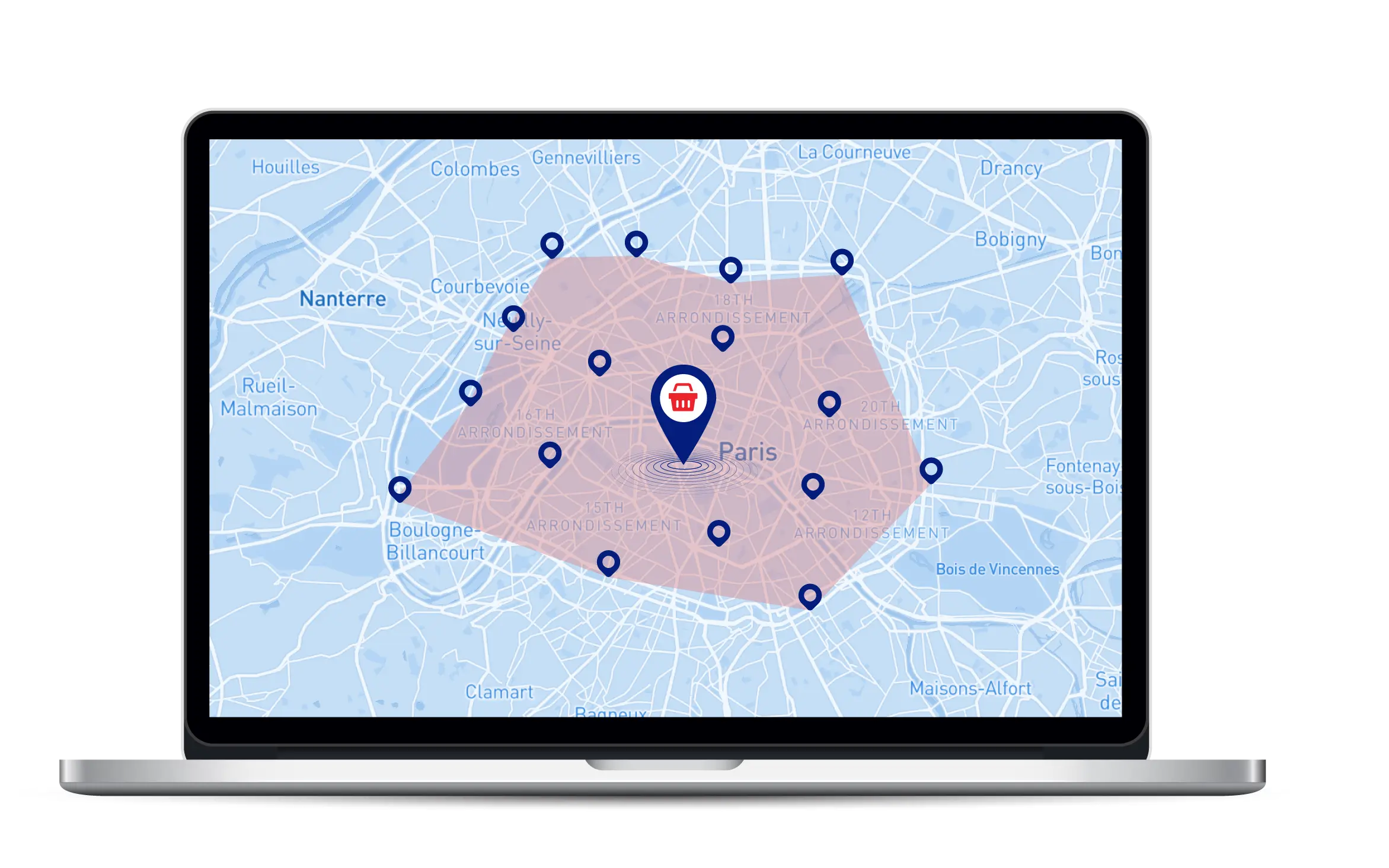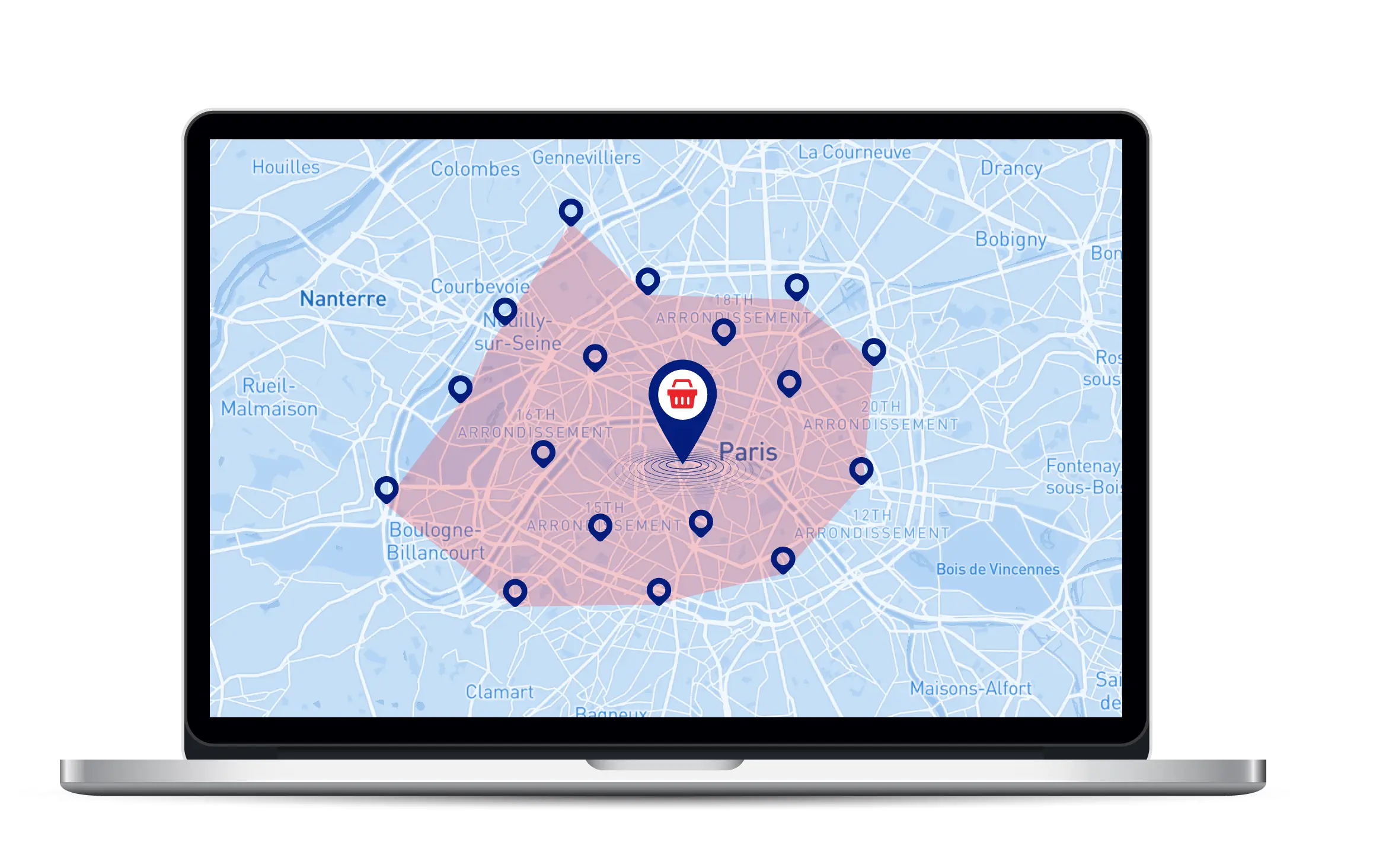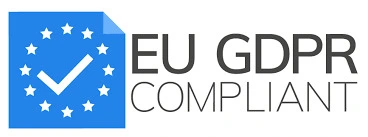One of the key marketing challenges for a retail brand with multiple store locations is undoubtedly its ability to adopt a multi-local strategy for tailored communications at each store. It is crucial to identify catchment areas and their characteristics to leverage them effectively.
Jump to
Why should a catchment area be flexible ?
Each store has its unique characteristics. Whether it’s a local, regional, or national campaign, it’s essential to work with partners who consider every criterion related to each store to implement an impactful multi-local strategy. By identifying these nuances, it becomes possible to define a relevant and effective communication area for each point of sale.
Various factors can influence the size of the broadcasting area, such as:
- Business sector : A fashion retailer will have different marketing expectations compared to a grocery store, even if they are located in the same city.
- Stores within the same sector : A luxury car dealership will face different challenges than a dealership offering more affordable cars, resulting in potentially broader target audiences for their campaigns.
- Store location : Urban stores may require a more focused distribution due to higher population density, competitor proximity, and longer distance travelled compared to stores in rural areas. Additionally, each region has its own specificities, specialties, and defining characteristics.
- Campaign timing : Some stores may see expanded audiences during the summer due to increased tourist footfall in their respective tourist areas.
Hence, it is intriguing to consider how location data can identify communication areas while considering these various factors.
How to define your catchment area using real-world data?
1) In-store movements
To ensure an effective digital campaign, it’s essential to define a coherent communication area adapted to each point of sale. An interesting approach is to analyze customer movements to the targeted store using geolocation data.
By examining consumer movements, it becomes possible to understand their origins. This allows for the definition of an ideal communication area that covers all potential travel scenarios. Relying on customer data, geolocated information statistically identifies a geographical area encompassing all individuals likely to visit the store.
This approach is fundamental for a multi-local digital campaign and should be applied to all stores to provide each one with its unique broadcasting zone.
2) Areas of activity
Once the broadcasting area is established, it becomes essential to determine the number of individuals who travel within it daily.
By using a volume of historical geolocation data with unique identifiers, anonymized insights about each individual can be extracted. Thoroughly processing each collected data point aggregates contact points robustly to define specific data sets for each user.
This process helps deduce daily movement zones, such as:
Workplace
Residence
By integrating users whose living zones have been geolocated into the initial communication area, the catchment area becomes truly optimized.
How to make your catchment area flexible during your campaigns?
Each campaign occurs at a specific moment, and while a broadcasting zone may be defined before each campaign, it cannot remain unchanged, even for a single point of sale.
As explained earlier, insights from geolocation data based on historical data spanning several weeks can define areas of activity and daily movement trends with fresh information. However, trends evolve, as do living zones. Therefore, it is beneficial to focus on sliding data to ensure that each campaign benefits from a coherent targeting strategy tailored to that particular moment.
Indeed, catchment areas can change due to factors such as relocations, competitive promotions, or vacation departures. Geolocation data helps address these variations, optimizing campaign relevance by ensuring that the advertising message reaches people at the right place and time.





